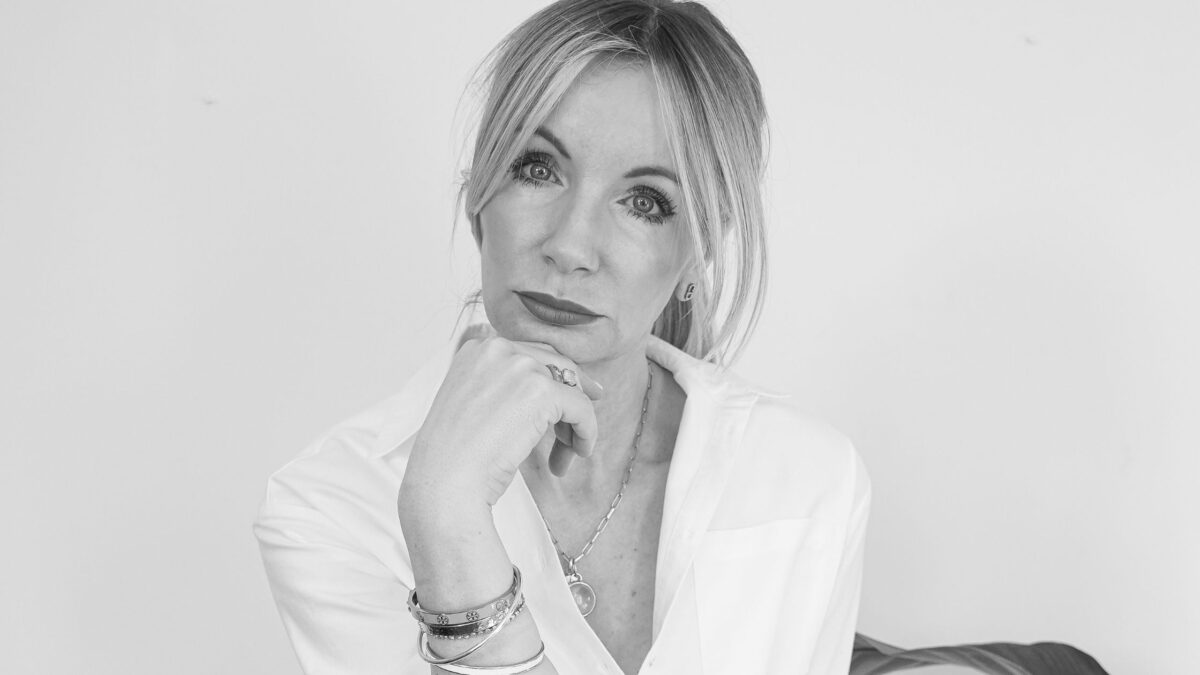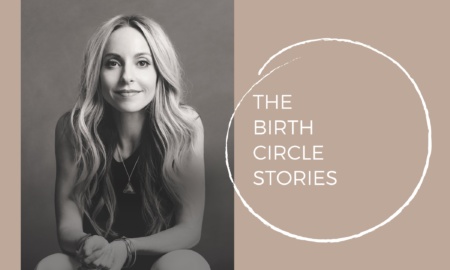
Most women don’t look like they’re falling apart on the outside—even when they’re struggling just to stay afloat on the inside. We keep the calendar moving, remember the birthdays, show up for work, hold it down for everyone… all while, too often, carrying silent stress, depression, anxiety, grief, and trauma.
In this deeply open and personal episode, I’m joined by UK-based integrative psychotherapist Helen Marie to talk about something that touches so many of us: what happens when our nervous system can no longer carry the weight of “I’m fine.”
We explore how burnout, people-pleasing, perfectionism, and high-functioning anxiety are often signs of a deeper story—one our nervous systems are telling, even when we’re doing our best to hold it all together. Through the lens of Polyvagal Theory and trauma-informed care, Helen shares the language, tools, and gentle wisdom to help us come back to ourselves.
This episode is a balm for anyone who’s ever felt exhausted but unable to rest, disconnected but still showing up, or overwhelmed by emotions they can’t name. It’s a reminder that you’re not alone, and that healing begins when we give ourselves permission to be human.
In This Episode We Cover:
- The quiet ways anxiety and depression show up in high-functioning women
- Why we often feel the need to appear “fine” even when we’re not
- An introduction to Polyvagal Theory and nervous system mapping
- Somatic practices to bring you back into your body and into safety
- How to meet your nervous system where it’s at—without judgment
- What it really means to choose yourself, one breath at a time
About Helen Marie
Helen is a UK-based integrative psychotherapist, author of Choose Again, and host of the podcast I Don’t Think We Talk About This Enough. With a background in public health, Helen returned to train in psychotherapy in her forties after supporting a loved one through a mental health crisis. She is now a certified clinical trauma practitioner who helps women reconnect with their worth and find safety in their own skin.
Resources + Links
- Helen’s website
- Helen’s Instagram: @h.e.l.e.n.m.a.r.i.e
- Deb Dana’s Befriending Your Nervous System
- Dr. Aviva’s Tapping Solution Menopause Series
The High Cost of ‘I’m Fine’: The Truth About High-Functioning Anxiety and Invisible Depression
I often ask my patients about Perfectionism, burnout, people-pleasing, and subtle trauma responses like fawning and freezing—not because they’re trendy psychological terms, but because these patterns shape our health in profound ways. When we’re operating in overdrive—trying to hold it all together—we’re not just emotionally exhausted, we’re physiologically altered. Our immunity, hormones, metabolism, heart, sleep, and mood all feel the impact.
And most women? We don’t “look” like we’re falling apart. We’re showing up to Zoom calls with a smile. We're making the meals, remembering the birthdays, meeting the deadlines. But under the surface, so many of us are carrying anxiety, overwhelm – even silent grief, and trauma. The dissonance between what we feel and what we present to the world can be profoundly isolating.
This is what I sat down to talk about with Helen Marie, a UK-based integrative psychotherapist who brings an extraordinary gentleness to how she speaks about emotional healing. Her words, both in her new book *Choose Again* and in our conversation, felt like a balm. A reminder to soften. To choose ourselves. To stop performing and start listening—to our stories, our bodies, and what we truly need.
Why High-Functioning Anxiety and Depression Don’t Have a “Look”
One of the most powerful moments in our conversation was this: anxiety doesn’t have a look. Depression doesn’t have a look.
Helen described it as the “swan effect.” So many women are like swans—appearing graceful on the surface while paddling furiously beneath the water, trying not to sink. And while the world sees us gliding, our nervous systems are in full-blown stress mode. Cortisol and adrenaline flood our systems. We’re inflamed, exhausted, and disconnected—but still smiling.
We feel ashamed to admit we’re struggling. Worry about being judged. Don’t want to burden others. So we stay silent. And the silence hurts.
I’ve seen this firsthand in my practice: women who show up polished and high-achieving, but beneath the surface, they're managing panic attacks, insomnia, racing thoughts, and disconnection. They’re not just tired—they’re burned out at a soul level. Yet they keep going. Because somewhere along the way, we internalized the message that it’s better to be productive than to be present, better to appear strong than to admit vulnerability.
What It Means to “Meet Your Nervous System Where It’s At
Helen and I spoke deeply about the nervous system—not in clinical terms, but in the real, lived experience of what it feels like to be in fight, flight, freeze, or that rare but beautiful state: calm, safe, grounded.
She teaches women to map their nervous systems using polyvagal theory, describing three key states like rungs on a ladder:
- Ventral vagal (safe, connected): Rest and digest. Deep breaths. Emotional regulation. This is where we feel like ourselves.
- Sympathetic (fight/flight): Anxiety, anger, urgency. The stress response on full blast.
- Dorsal vagal (freeze/shutdown): Exhaustion, disconnection, numbness. The “I can’t do it anymore” feeling.
The invitation is to “notice” where we are on that ladder and ask, “What would support me right now?”
This framework is powerful because it gives us language and agency. Instead of feeling like we’re broken, we begin to understand—we're having a “nervous system response.” And that response can shift. With a gentle breath, with a grounding touch, with the smallest act of self-kindness, we can begin to climb back up the ladder to safety.
The Stories We Tell Ourselves—and How to Unravel Them
One moment from our conversation that hit home for me was when I shared how, in moments of anxiety, my mind creates stories. “You’re behind on your book. You’ve lost your mojo. The movement will move on without you.”
But when I step back, I can see the truth: these are *sensations*, not facts. And when I move my body, step outside, dance, or simply take a breath, the sensations shift—and so do the stories.
Helen offered a simple but profound reminder: ask yourself, “What’s true here?” That one question can separate the inner spiral from reality.
We all have narratives—crafted by past wounds, cultural expectations, and the constant mental chatter that anxiety brings. But awareness is the first step to healing. I often encourage my patients to write their anxious thoughts down and then question them like a detective. Is this absolutely true? What else might be true? It’s a gentle way of loosening anxiety’s grip.
Creating Capacity—Not Just Coping
We talked about the metaphor of the water glass. Imagine your glass is already filled to the brim—maybe even overflowing—and then life adds a few more drops: a sick child, a deadline, an emotional conversation. Suddenly, everything spills over.
That’s when we break down. The work isn’t about making sure no drops come in. Life *will* keep adding. The work is about keeping the water level lower. Making space. Creating capacity.
For Helen—and for me—that means routines, sleep, boundaries, support, journaling, and rest. It means showing up for ourselves every day *before* the breakdown.
And it's not about adding more to your to-do list. It's about subtraction. Where can you say no? Where can you delegate or delay? What can you let go of, not just physically but emotionally? Can you create a rhythm that nurtures your nervous system instead of depleting it? This is how we build resilience—not by pushing harder, but by making space.
Letting Go of Perfection and Choosing You
Our conversation meandered through so many beautiful paths: journaling rituals, drawing in the margins, non-dominant hand writing, breathing into the body. But it all came back to one central truth: you matter.
Choosing yourself isn’t selfish. It’s revolutionary. And it’s often as simple as asking: “What’s the next kindest thing I can do for myself right now?”
It might be making a cup of tea. Saying no. Crying. Dancing. Journaling. Asking for help. You don’t have to figure it all out—you just have to take the next kindest step.
I love Helen’s question: “How have you cared for yourself this week?” Not in an idealistic or Instagram-perfect way, but in the real, messy, grounded way. Choosing you might look like a warm bath or it might look like letting go of toxic relationships. It’s both soft and fierce; it’s boundaries and gentleness. It’s a reclamation of your nervous system—and your life.
The Nervous System Isn’t Just a Concept—It’s Your Compass
When I first learned about polyvagal theory and the mapping of nervous system states, it changed how I understood myself—and my patients. Suddenly, it wasn’t just “I feel off today.” It was, “My body is speaking to me.” The science gave structure to what so many women feel but can’t name.
We’re taught to override. To hustle, to toughen up, to perform. But polyvagal theory invites us to pause and ask: “What does safety feel like in my body?” And the answers are incredibly individual. For some, it’s lying down in a dark room. For others, it’s a walk, a phone call with a trusted friend, or a familiar song played on repeat.
Helen and I talked about how this understanding gives us back our agency. We're not at the mercy of moods or dysfunction—we're in a relationship with our bodies. And like all relationships, it takes time, curiosity, and kindness to build trust.
Rituals, Tools, and Tiny Shifts That Matter
The practices Helen shared were deeply somatic and profoundly simple. One of my favorites? Tapping the side of the hand gently with your fingers while breathing. It’s not flashy. It’s not complicated. But it brings your awareness into the body. It slows the mind.
Another beautiful technique: cupping the body with your hands—gently patting your arms, chest, thighs, and legs. You don’t have to fix everything to shift something. Just one breath. One point of reconnection.
These micro-practices aren’t substitutes for therapy or structural change—but they’re like breadcrumbs leading us home. When I’m overwhelmed, it’s often the smallest shift—lighting a candle, placing a hand on my chest, standing barefoot on the earth—that reminds me I’m still here, I’m still me.
The Myth of Doing It All—and the Power of Saying No
We touched on something crucial in our conversation: the belief that we’re supposed to do it all. Be the caregiver, the professional, the supportive partner, the competent friend. But the truth is, the system is designed to benefit when we self-sacrifice. And the cost? It’s our health, our vitality, and our joy.
Helen reminded me—and I’ll remind you—that it’s okay to disappoint others if it means not abandoning yourself. Boundaries are not walls; they are the architecture of a sustainable life. And when we start choosing rest over performance, authenticity over approval, something begins to shift not just inside us—but in the culture around us.
Redefining Success Through Nervous System Awareness
One thing that came through in our discussion was how often success is defined by output—our titles, our income, our schedules. But what if success was about regulation? About spaciousness? About waking up and not feeling like you want to hide under the covers?
Imagine if success meant being able to notice your anxiety before it hijacks your day. Or knowing how to come back to calm when life inevitably throws curveballs. That’s the kind of success that builds a foundation. It’s slow, steady, and often invisible to others—but it changes everything.
So much of what Helen and I discussed points to a collective hunger for a slower, truer pace. Especially post-pandemic, many of us are craving lives with less rush, more meaning, and a deeper attunement to what our bodies are asking for. This isn’t laziness—it’s evolution.
Journaling as a Mirror and a Map
We ended our conversation with a delightful shared discovery: we both journal with the same orange Leuchtturm 1917 notebook. There’s something deeply comforting in having a sacred space where your thoughts, feelings, and fears are held.
Journaling isn’t just about recording events—it’s a form of listening. Sometimes I write what’s going on. Other times I draw. Sometimes I write “as if,” imagining the life or book I want as if it already exists. Visualization, as Helen shared, can regulate the nervous system, too. It gives your brain a new template, a hopeful pattern to follow.
Whether you write three free-flowing pages like Julia Cameron’s “Morning Pages” or respond to a simple prompt like “What do I need right now?”—the point is presence. You become your own witness, your own companion. You begin to build that muscle of self-reflection that turns into resilience over time.
It’s Okay to Start Small
If all of this feels overwhelming—please hear me: you don’t have to overhaul your life to begin healing. You don’t have to quit your job, move to a forest, or suddenly adopt a perfect morning routine.
Start with a breath. With a hand on your heart. Notice how your body feels right now. Ask yourself Helen’s beautiful question: “What’s the next kindest thing I can do for myself?”
It might be drinking a glass of water. Stepping outside. Turning your phone off an hour earlier. It might be journaling for five minutes or lighting a candle with your tea. The nervous system responds to “consistency”, not intensity. These small acts, done over time, rebuild the safety we’ve been taught to abandon.
I hope this conversation with Helen, and the reflections I’ve shared here, remind you that you’re not alone—and that there’s nothing wrong with you if you’re struggling.
Your nervous system is speaking. Your body is wise. And you are worthy of rest, of softness, of choosing yourself again and again.






